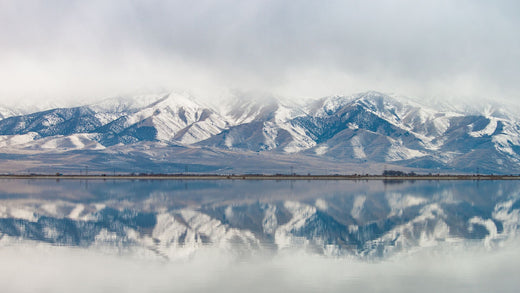Fishing is one of the most popular outdoor activities with a rich tradition in the United States.

Fishing has been an important activity in the territory that today is the United States since prehistoric times.
Native American tribes relied on fishing for sustenance and trade, and early European explorers also engaged in fishing activities. However, recreational fishing as a leisure activity did not become popular until the 19th century.

In the mid-19th century, the arrival of the railroad system in the United States made it easier for people to travel to fishing destinations. This, combined with advances in fishing tackle and equipment, helped popularize recreational fishing. The first registered fishing club in the United States, the American Fish Culturists' Association, was founded in 1870.
 |
 |
During the late 19th and early 20th centuries, several notable figures helped popularize recreational fishing in the United States. Theodore Gordon, a fishing enthusiast, helped develop the sport of fly fishing and founded the Catskill Fly Fishing Museum. Zane Grey, a famous author, and avid fisherman wrote several books about fishing and helped promote the sport among the public.
 |
 |
By the 1920s and 1930s, the popularity of recreational fishing continued to grow, and fishing tournaments and events became more common. The International Game Fish Association (IGFA) was founded in 1939 to promote the sport of fishing and support conservation efforts. The IGFA established world fishing records, encouraging anglers to seek new and exciting fishing destinations

Today, recreational fishing is a popular activity in the United States, with millions of people participating in the sport each year. The country offers a wide range of fishing destinations, from freshwater lakes and rivers to coastal waters and deep-sea fishing opportunities. Recreational fishing has also become an important part of conservation efforts, with many organizations and individuals working to protect fish populations and their habitats.
This country has been blessed with a vast network of lakes and rivers that provide excellent opportunities for fishing enthusiasts. However, not all bodies of water are created equal, and some stand out as the best places to fish.
Here are some of the top five lakes and rivers that are destinations for fishing enthusiasts in the United States, taking into account factors such as species, size and abundance of fish, as well as accessibility, facilities, and services.

Lake Okeechobee, Florida:
Lake Okeechobee is one of the largest freshwater lakes in the United States, covering an area of approximately 730 square miles. It is known for its excellent fishing opportunities, with black bass being the most popular species among anglers. The lake also has a large population of bluegill and catfish. There are numerous marinas, fishing guides, and resorts.

Kenai River, Alaska:
The Kenai River in Alaska is one of the most popular destinations for anglers looking to catch salmon. The river is home to all five species of Pacific salmon, including Chinook, Coho, and Sockeye. The river is also famous for its trophy-sized rainbow trout, making it a great destination for fly fishing enthusiasts.

Bighorn River, Montana:
The Bighorn River in Montana is a world-renowned fly fishing destination. The river hosts a healthy population of brown and rainbow trout, some of which reach sizes of up to 20 inches or more. The Bighorn River is a tailwater fishery, which means it maintains consistent water temperatures and excellent fishing conditions year-round.

Lake Michigan, Michigan:
Lake Michigan is the second largest of the Great Lakes and is known for its excellent fishing opportunities. The lake is home to a variety of fish species, including Chinook salmon, lake trout, rainbow trout, and smallmouth bass. There are several marinas and resorts around the lake that provide easy access and comfortable accommodations for anglers.

Yellowstone River, Montana:
The Yellowstone River in Montana is a popular destination for fly fishing enthusiasts. The river hosts a healthy population of rainbow and brown trout, some of which reach sizes of up to 20 inches or more. The river also offers excellent scenery and wildlife viewing opportunities.
While fishing sport and varsity jackets may seem like two unrelated topics, there is a common thread that ties them together - the sense of pride and accomplishment that comes from achieving a goal or milestone; for anglers, catching a big fish or winning a fishing tournament can be a source of great pride and accomplishment. The same can be said for athletes who wear their letterman jackets, where winning a game or championship can be a defining moment in their lives.










